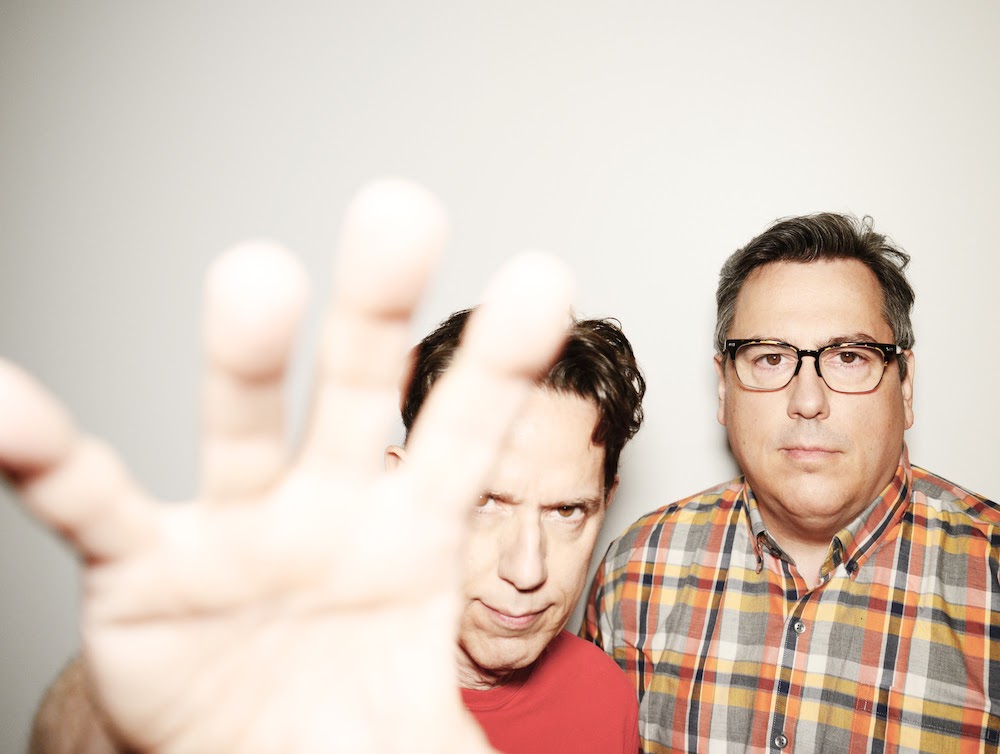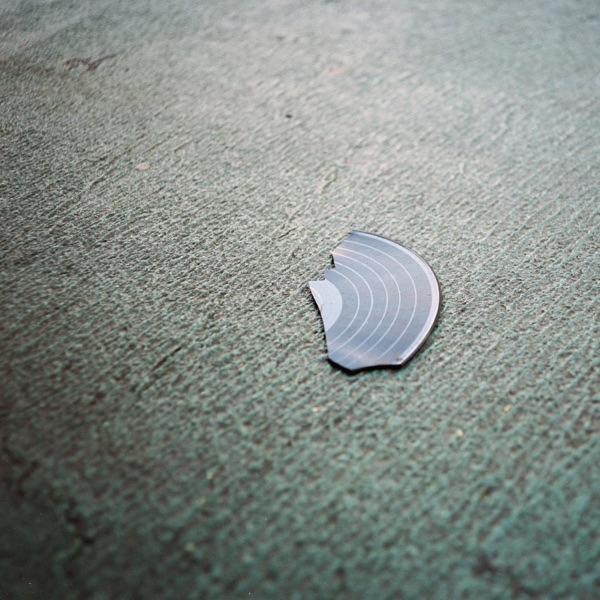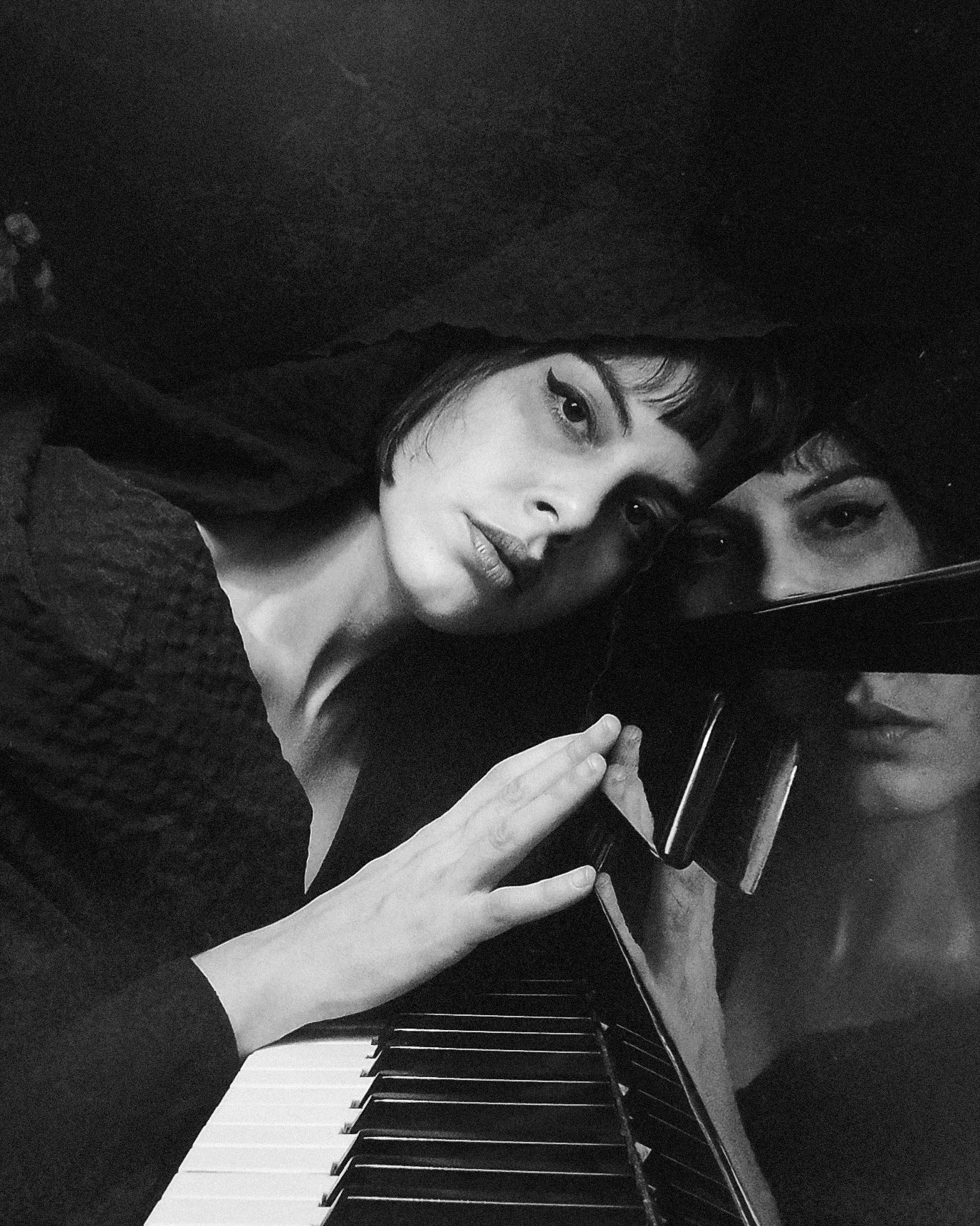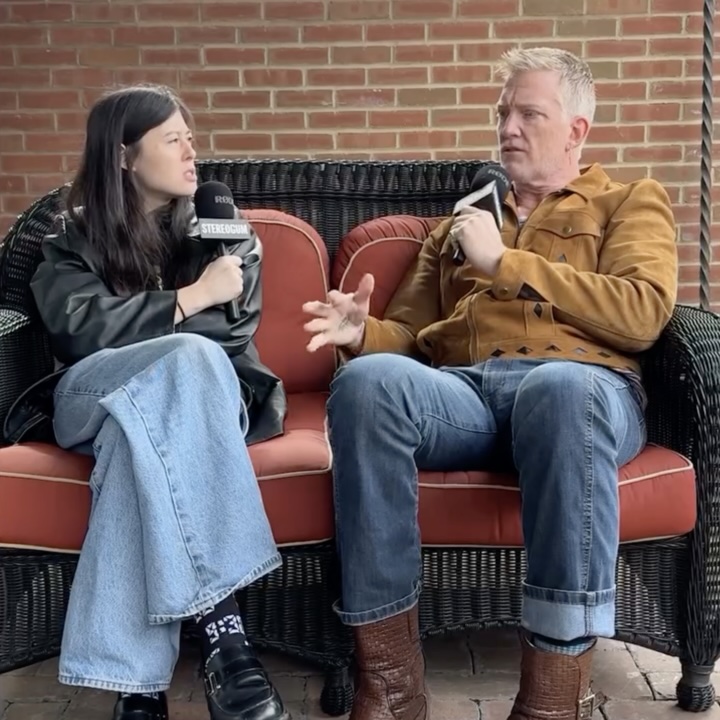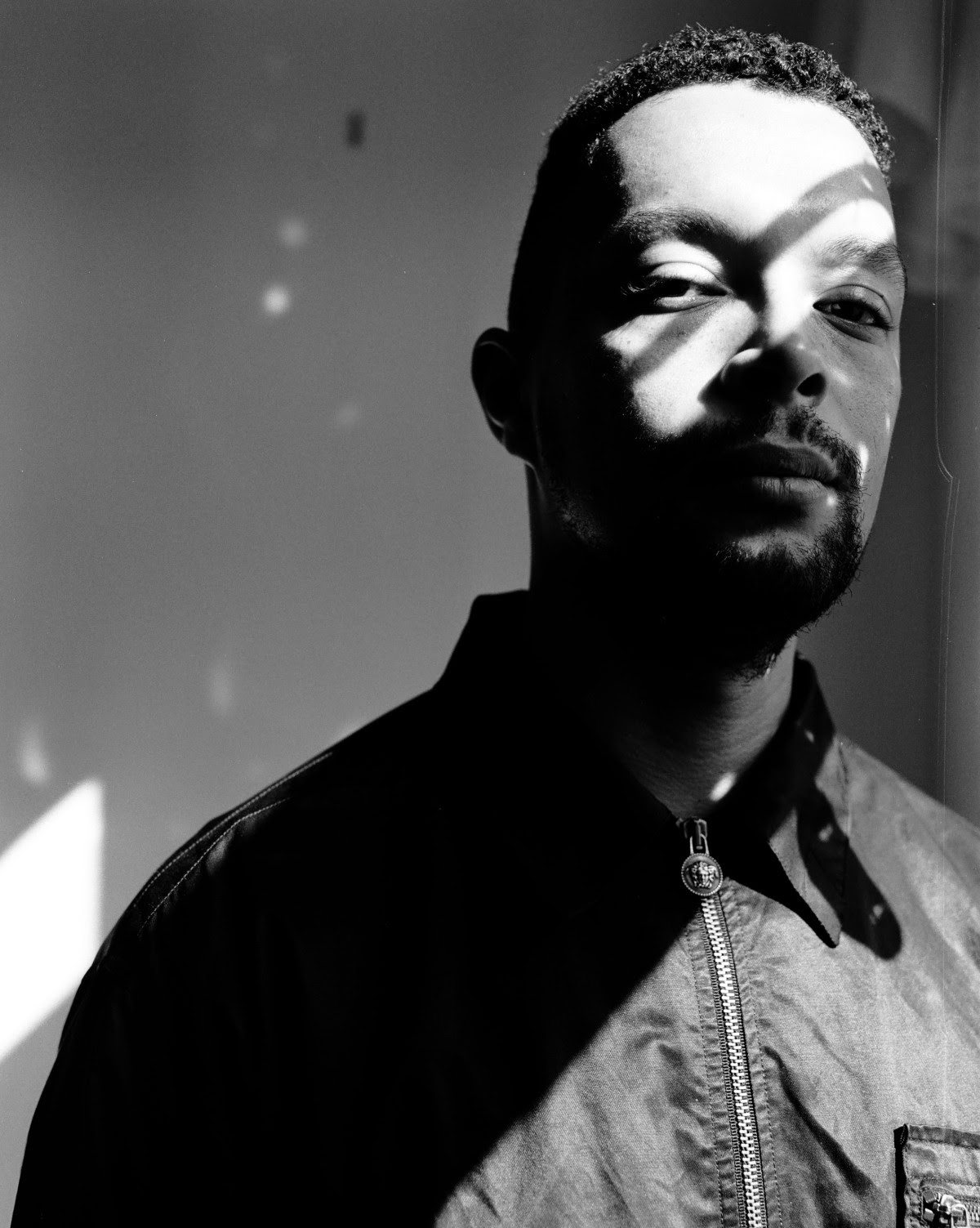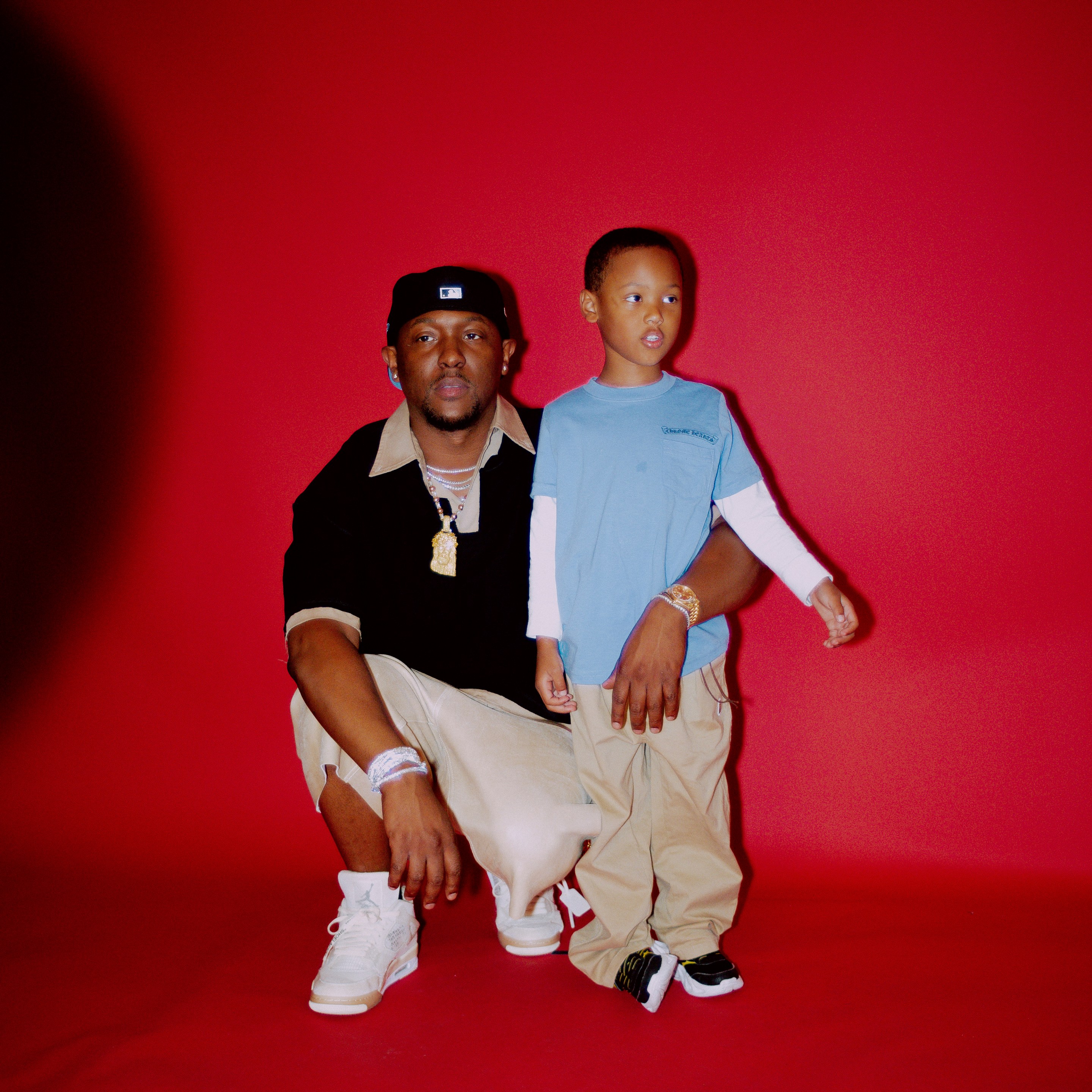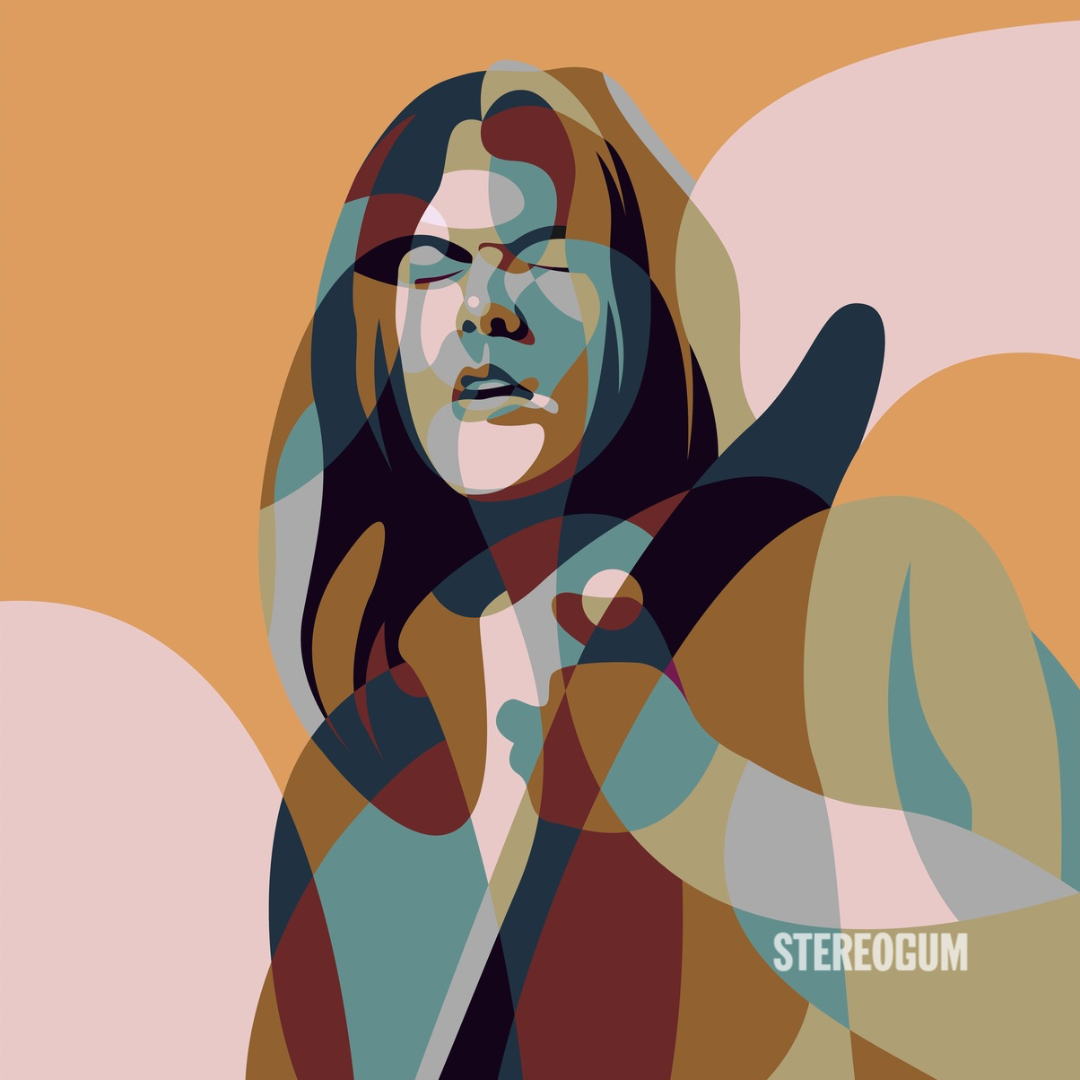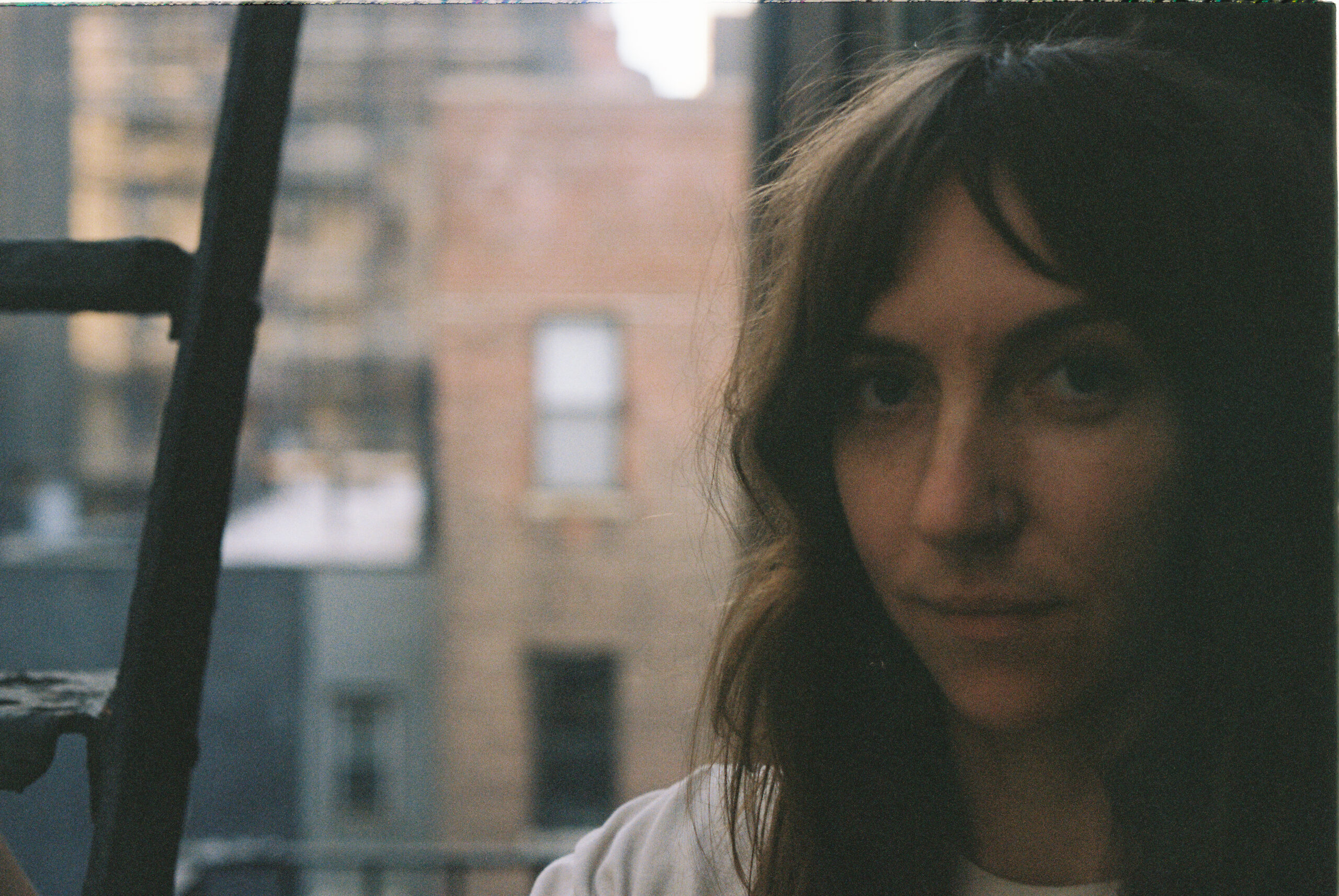We’ve Got A File On You features interviews in which artists share the stories behind the extracurricular activities that dot their careers: acting gigs, guest appearances, random internet ephemera, etc.
It’s hard to know where to start with a band like They Might Be Giants. Formed in the 1980s, the storied alternative-rock duo — John Linnell and John Flansburgh — are highly prolific, knocking out 16 studio albums and five kids’ albums across four decades. They’ve won two Grammys. They’ve composed jingles for Play-Doh and Dunkin' Donuts. They wrote the theme music to Malcolm in the Middle, which earned them one of the two Grammys. They reimagined Bob Mould’s famed "Dog On Fire" for the Daily Show in the late '90s. They’ve written original music for Disney and made cameos on Cartoon Network and Nickelodeon. CNN even got them to write an educational Schoolhouse Rock-style song about how the Electoral College works. Through it all, John and John have maintained — and explored new dimensions of — their signature experimentalist rock, which contains layers of absurdist humor, surreal imagery, and clever wordplay.
These days, TMBG are prepping BOOK (out November 12), a hardcover art volume featuring photography by Brian Karlsson and graphic designer Paul Sahre and an accompanying album housing the already released "I Can’t Remember The Dream" and "Super Cool." The multi-medium approach felt right to the band. "The album as a format is obviously fading out," Flansburgh explains over the phone. "So it just seemed like a way to refresh people's album experience a little bit. In a way, we're doubling down on the idea of an album by expanding it into this actual, physical manifestation."
In the lead-up to BOOK, both Johns called me up to talk about the latest release and look back on their many extracurriculars, from "Particle Man" and "Istanbul (Not Constantinople)" getting the Tiny Toons treatment to guesting on Blue's Clues and much more.
BOOK (2021)
Why did it feel right to simultaneously release a book and album, especially after this many decades together?
JOHN FLANSBURGH: I'm personally a big fan of books of photography and art books in general. I really like the art book experience. So, it's always been in the back of my mind. We were approached a few years back by a publisher to do a career retrospective coffee table book. And although we celebrate the history of the band on a pretty regular basis, I think there are some things that feel a little bit like watching your tombstone being carved. And doing a photo retrospective that was fixated on our faces and fixated on the image of the band seemed a little less interesting than collaborating with an active photographer and an active graphic designer and working on something that's actually new.
I think we're only interested in doing things that feel essentially new. Which is a crazy thing to say when you're in a band that's 35 years old, in the rock genre, which is impossibly old. But there's still a lot to be done inside songwriting, and it feels vital to us. So I guess we're not really that worried about authenticity stuff. But we do want things to feel bold. And so if we trip over some cornerstone of rock music, it's just on the way to getting to something else.
At what point did you actually begin to work on the project?
FLANSBURGH: Well, a portion of the album was put together during the pandemic. I think we felt kind of like everybody else, which is a ton of, "This is the scariest summer vacation I've ever been on." I wouldn't say the pandemic was particularly inspiring, I think it was actually just the opposite. I think for a while it was just so confusing that it knocked us out of our regular creative head spaces.
Writing and recording and doing this stuff, it's such a strange compulsion for us, and it's something that we do whether we're prompted to or not. I mean, we're actually working in earnest right now on the next album, and this album hasn't even come out yet. So it is something that we just do. But that's healthy. I think having a laboratory environment for your songwriting and whatever your creative process is, treating it like it's just one big experiment is a great way to work, and it's a great way to feel.
Playing MTV's 120 Minutes (1988, 1990, 1993)
You guys were repeat visitors to MTV’s 120 Minutes, and you even wrote your own TMBG version of the show's theme song, right?
JOHN LINNELL: We were guest hosting on 120 Minutes, and I think we did it more than once. So John and I arrived and went into a little conference room as they were preparing, and we were trying to scheme, "What are we going to do? They want us to introduce videos," which we'd seen other bands doing. But we wanted to make it more personal. So the first thing was that John and I, very quickly, in that conference room wrote a song called "120 Minutes," and the idea was that we'd be counting down, throughout the show, all 120 minutes. So we wrote this song, and then every 15 minutes or so in the course of this show, we'd play another version of the song where we'd just say "Here's how many minutes are left," in the form of the song.
I seem to recall working with camera people who were into doing a lot of oddball stuff. We'd try all kinds of things, like doing extreme foreground and background, or pretending we were hanging upside down by flipping the camera upside down. There are all kinds of cheap-o video things that you could do on the spur of the moment. We were just cycling through all of those ideas, and there was a lot of that kind of stuff that was just, "Okay, we've got another segment, let's make this one completely different somehow, and try and make it interesting."
It was generally kind of gratifying because we were given lists of videos of bands that we actually liked. We were presenting stuff that was stuff that we were into at the time, and it was fun to play. So on the whole, that was a kind of a good creative collaboration between us and MTV, I seem to recall.
Playing Top Of The Pops (1990)
https://youtube.com/watch?v=3FRiKeu70Go
How did the "live TV" experience differ on, say, Britain’s Top Of The Pops?
LINNELL: Well, the experience of going to the UK... First of all, we started going there almost right out of the box. As soon as we had an album out in the US we started trying to break into the European markets, and it was a very, very low-end kind of touring where we were in a little mini-bus with a driver and our road manager/sound man. It was just the four of us. And the typical situation is that we'd get booked to do press immediately upon arriving in the UK.
So John and I would generally be radically sleep deprived and jetlagged, and we had a couple of occasions which were immortalized on video where we were really struggling to even keep our eyes open. And so there's some very, very zombie-like interviews with us in the UK from that period, which are pretty hilarious. It was just a very surreal experience going to the UK because they had very different ways of presenting bands. At the time, we had this perception that that UK press could be sort of cutthroat. They either really, really liked you, or you were their sworn enemies. And we had experiences on both sides of that, not just in the UK, but also in Germany and other places where they suddenly turn on you for some reason.
But we kind of accepted that stuff, the cost of doing the work. Back in the day, Top Of The Pops in the UK was a really peculiar experience because they had a very powerful musicians’ union in the UK, and you were expected to use all union crew and equipment to make the recording that you were going to play as your backing track on Top of the Pops. Of course we were one of those bands that used backing tracks. We had a background tape recorder that we'd sing and play over. But in general, Top of the Pops was, at that time, bands lip-syncing to their record. And hilariously, a lot of bands would kind of let the cat out of the bag by just doing a deliberately bad job of lip-syncing. Like the Sex Pistols famously did a completely reckless appearance on Top Of The Pops where they were not trying to make the lip-sync remotely credible.
But anyway, we were willing to play along with this. We were informed when we got to the BBC that we were expected to re-record the entire track in a studio, and basically do it very, very quickly, within a few hours, and pretend that that was the track we were going to use to satisfy the union.
At that point, we were allowed to use our own original track. In fact, expected to use this actual single version of the song has the backing track. But we had to go through this weird pantomime. And again, we were jetlagged out of our minds whenever we showed up. So the whole thing was just an utterly surreal experience because we were being told: We have to pretend to be recording. Everybody knows this is fake, and we just have to run through the motions of it, but we actually have to get musicians and go through this charade of pretending that we're re-tracking our single. It was one of the things where you go, "Well, how much am I supposed to act like this is real? Am I allowed to say, 'This is ridiculous' in front of anybody?" And he was like, "Oh yeah, no, it's just what you do. This is what all the bands have to do when they show up on Top Of The Pops.'"
Clarissa Darling's Favorite Band (1991)
Do you recall being name-checked in the pilot episode of Clarissa Explains It All as Clarissa's favorite band?
LINNELL: Oh yeah, we were very much aware of that. We actually knew the guy who produced it, whose name I'm completely blanking on right now. But he was someone who was interested in us and working with us, and he was also producing this Clarissa show. And then I think as it turned out, Melissa... What's her name? Melissa Joan Hart? It turned out she was actually a fan of They Might Be Giants, just coincidentally, even though they'd written that into the show. So there was this kind of feeling of like, "Oh yeah, this is great." They stuck our poster on the wall of her bedroom. And then I think at some point in the show, she says, "Oh yeah, this is the band I like."
FLANSBURGH: It was just sweet. I like to pretend that the band doesn't even exist in the culture except as an abstract project of unlimited potential, which is hard to do. Even if I go into a guitar shop, I'll be talking to a guy who is covered in sleeves of tattoos, and he'll just be like, "You guys are awesome." And that's a very nice place to be in the culture, and it's nice to be recognized, and it's nice to be acknowledged, and I'm really grateful that, for a lot of people, and it seems like a lot of people in the general public, recognized that They Might Be Giants is its own, self-defined musical project. You can be into grunge, and like They Might Be Giants, be into the Beatles and like They Might Be Giants. You can be into hip-hop and like They Might Be Giants.
We don't define people's worlds, usually, but we're a happy thing at the left-hand side of their record collection, or their music files or whatever. We have a really unique place in the world, it seems like, and I'm grateful for that. But I try not to think about it at all, because it just makes me nervous.
"Istanbul (Not Constantinople)" / "Particle Man" on Tiny Toons (1991)
The first memory I have around They Might Be Giants is watching animated videos for "Istanbul (Not Constantinople)" and "Particle Man" on Tiny Toons. How did that end up happening?
FLANSBURGH: Just thinking about it is a three-layer cake of very distant memories and weird philosophical concerns that just don't even enter into the 21st century, and then just reflecting on the crazy state that the band was in when the decision was made. We were literally in a Ford Econoline stretch van with equipment stacked up to our heads driving to a gig for a guarantee of like $150 when the offer came in. And it might've been on a very early cell phone that was literally on a cord and the size of a shoe, in the van. And it was flattering that it was a Steven Spielberg [production]. Basically the pitch was: Warner Brothers was starting the Merry Melodies Cartoon House again. And I guess this is in 1989, this is kind of on the heels of... What was the cartoon movie with the English actor that was a big? It was a very elaborate production. The cartoon characters lived in Toon Town.
Who Framed Roger Rabbit?
FLANSBURGH: Yeah, Who Framed Roger Rabbit? I think that had come out. Or if not, there was a lot of interest in original animation at that moment. Somehow it seemed very zeitgeist-y. But I have to admit that the main thing that really turned our heads was that they were going to pay us some crazy amount of money, and even though we had had started work at Elektra. I guess this must've been early 1990. So we were just starting to do promotional shows for Flood.
It was a real head-turner for us. We'd had a lot of success, but... I mean, being in a band is like constantly feeling broke, and then not feeling broke, and then feeling broke again. So I think this might've been the first time that we actually didn't feel completely broke. But it was just a few months after feeling desperately broke. So it just seemed like, "Oh, well this will just be great. Let's definitely just do this." But at the same time, it had to be something kind of cool.
"Dr. Worm" Video Premieres On Nickelodeon's KaBlam! (1998)
You guys had a pretty fruitful relationship with Nickelodeon over the years. Researching this File gave me a good reason, for example, to revisit the highly underrated Nicktoon KaBlam!.
LINNELL: I think KaBlam! was Mark Marek doing the animation? He was somebody that we'd worked with. He'd illustrated some of our early EPs. And I think we had him work on a video as well. And I don't know whether he just did... I'd have to go to the internet and find out, but I can't remember whether he was actually doing anything other than illustrating. He may have been doing some of the writing as well. Anyway, I have a fond memory of that, unless I'm completely getting it wrong. That was a great show.
Theme Music For ABC's Brave New World Miniseries (1999)
How did you end up producing an opening theme song for an ABC news program?
FLANSBURGH: I don't know if you listen to Radiolab, but Robert Krulwich, one of the hosts, was a fan of the band, and he brought us in. It was the summer replacement show for the Ted Koppel Nightline program. Ted Koppel would take a summer vacation, and Brave New World was not about the book Brave New World. It was actually about the future of science, and it was this very poppy... It was very much a predecessor to Radiolab. It had a lot of very interesting brain-teasing ideas about science that were just current. And so he tapped us to do some original songs for the program that would be very hard to explain in an entertaining way.
I think they had seen that we had done some fact-based songwriting that had some charm to it. So they basically tapped us to do that. And then when John Williams' asking price to do the bumper cues probably topped a half million dollars, they said, "Would you guys be interested in doing the incidental music cues as well?" And those had a little bit of that news bombast to it.
"Dog On Fire" / The Daily Show (1998)
FLANSBURGH: That was actually the work that the people at The Daily Show saw that got us the job on The Daily Show. We were hired to do the orchestral opens and closes of the segments, just as a work-for-hire. It was faceless. They didn't need our name. They just wanted news music that sounded authentic and interesting. And so they'd seen what we did for ABC, hired us to do that, and then there was the original instrumental "Dog On Fire," but Bob Mould's was deemed too repetitive. That was the entire thing. They just added in a re-do of the opening theme. I think Bob Mould’s theme played for a month, and then the trombone-led, almost a neo-ska thing, that we did came in.
And from there, we just ended up doing like a million other jobs. I mean, it was a transitional moment for us because we had just come to terms with Elektra. And so after 10 years of having Elektra answer the phone and say, "No, they're busy," suddenly we started answering our phones directly, and a lot of opportunities came over the transom very quickly.
Guest-Starring On Blue's Clues (2004)
You guys also had a cameo on Blue's Clues, two years after you released your first kids' album in 2002. Was your 2004 guest spot on Blue's Clues connected to your foray into kids' music?
LINNELL: I'm not remembering the sequence very well, but I think that was probably dovetailing into us doing our first kids' record. We put out our first album [1986’s self-titled] and it had this illustrated cover by Rodney Alan Greenblat. It looked to a lot of people like a kids' record. And this was something we were kind of horrified by because we were really not thinking we were doing something for kids at that time, in 1986, when the first record came out. And in fact Tower Records got our record and immediately stuck it in the children's section by mistake. And so we were really very, very protective of our image as a band for adults. We were really wanting people not to get confused and think it was somehow a kids' act.
I'd say it took the better part of a decade or more for us to kind of get past that and think, "Well, we could..." Once we'd established ourselves, [we realized] we could actually do something for kids and have that be considered a separate category. In other words, this is not the main thing we do, but we can also make up songs for kids, or do a kids’ show, do something that is kid appropriate and not have that confuse anybody about what the general idea of this project is.
We were much more uptight when we first started about how we want to be perceived, and I think we got more and more relaxed as we got older. I think by the end of the ‘90s, there was a moment where we really started to experiment and branch out. And we also started doing stuff that we would have been uncomfortable with in the ‘80s, like doing advertising, and doing stuff for all kinds of commercial purposes, doing songs to go into movies.
It was around the very end of the '90s when we did our first kids’ record [2002’s No!]. And that was a very fun experience, actually. Once we'd gotten over being uptight about it, we really figured out that we enjoyed this other experience a lot, of doing something kind of freeform for kids. It was like, "Well, it can just be entertaining. Kids deserve entertainment."
FLANSBURGH: I think professionally as a band, our thinking has evolved over the years in part because our situation has evolved. I don't think we would've dared do kids' music if we felt like that would be the thing that would define us. I think, in a way, ending up doing kids’ music was the most definitive proof that we felt like the project had been defined. I don't think we think too much about limitations that we need to put on ourselves, but I think we did invest a lot early on in aesthetic decisions, stylistic considerations about how to blend humor into songwriting in a way that would hold up to repeated listening.
I think we always were very afraid of being misunderstood as a comedy band. And I think we needed to think through and work through a lot of ideas in the early years. Sometimes the stuff that seemed interesting didn't scan as funny. It actually scanned as too strange. And then sometimes the stuff we thought was interesting just landed with the audience as something that seems silly. And just balancing all those things out, balancing the theater of what we were doing versus the musicality of what we were doing, all those open-ended problem sets had to be wrestled to the ground. And those were the things that defined the band.
I don't like thinking of myself as a snob, but I think from any practical remove, I definitely scan as a snob. I'm just as opinionated. As a memo to any rock critics out there who think we are not self-aware, you are incorrect.
But you've got to push a lot of ideas out to figure out how to do something successfully. And I guess the thing that was so great about being able to circle all the way back, and just do stuff for kids in an un-self-conscious way, which I hope is how the stuff feels, it's imaginative music. It's music that I think, if kids listen to it, it will spark their imaginations, and make them think about things in different ways, and just get kids excited about sounds and ideas. It's pretty straightforward, in a way.
Winning The Grammy For Best Children's Album (2009)
Did you find it at all ironic, then, that you ended up winning Grammys for kids' albums?
LINNELL: Yeah. I think we took what we could get. We made fun of the Grammys for years until we actually won a Grammy, and then we just accepted it. I think it was a good résumé item, basically, not to sound totally cynical.
I think that it was easy to become cynical as an artist seeing who wins and you get a little bit of an idea of how the voting takes place and then you think, "Oh yeah, this isn't like God himself pointing his finger and saying, 'You're the greatest band of all time.' It's actually just some industry types voting." I mean, people think the national political elections are dodgy, but I feel like the award ceremonies are much weirder and more circuitous in the way that they take place. So you can't get too outraged about Jethro Tull winning best heavy metal album or whatever. It's sort of like, "Well, this is just what happens when you set it up this way." And it's a nice thing for your résumé to say like, "Oh yeah, we won a Grammy," but our close friends really didn't give a shit.
Play-Doh Doh-Doh Island Commercial (2003)
https://youtube.com/watch?v=QAP1KCa2WoY
I stumbled across a Play-Doh jingle you guys wrote from 2003. Does that line up with the time you guys were more open to the idea of advertising?
LINNELL: Exactly. I mean, I feel like the Play-Doh thing was not very close to our hearts in terms of the creative work, but they did pay us, and it was an easy and good gig. So that was the kind of thing that we were like, "All right, sure. Yeah, we'll do this." And we still occasionally joke about Doh-Doh Island, because that was the product we were writing music for, was this thing called Doh-Doh island. And in fact, you know how on your online bank account, you can nickname your various accounts to remind you of what they're called? Mine is called “Doh-Doh Island” to this day.
We did other ads things that were, I'd say, more artistically close to the kind of things we liked. And so when we did a job like that, it was particularly gratifying. And I think in my mind the best one was the Dunkin' Donuts ad, because the advertising agency was particularly interested in us and they want us to do They Might be Giants-like material to advertise Dunkin' Donuts. And we did a million of these songs, and it was super fun, I got to say. We've done supposedly integrity work that was a lot harder and less gratifying, but the donut ads were a total blast.
Malcolm In The Middle Theme Song (2000-2006)
https://youtube.com/watch?v=BVSo_NP51WI
Speaking of you guys soundtracking a show, I had forgotten that "Boss Of Me" was picked to soundtrack Malcolm in the Middle. Do you recall how you were approached for that?
LINNELL: It's another one of those things where the show was hugely popular, but not everybody knew it was They Might Be Giants, and not everybody had heard of They Might Be Giants. So I think it was sort of like, "Well, it's just this rock song that introduces this show that unexpectedly took off." We tried to kind of let people in on the fact that we were the band that had written it.
In fact, it was written for the show. John Flansburgh was cold-called by the producer. And he said, "I'm creating this show. Here's the idea of it. We need a theme song." And again, for the first couple of seasons we wrote all the incidental music as well. We recorded all the little stings and themes and things that went on during the show. Linwood Boomer is the guy's name. And John said to him, "Well, how would you sum up this show in a nutshell?" And Linwood said, "Life is unfair." And so John just basically broke that down and that became the sting.
Then we shot a video in LA with the cast of the show that was absolute torture to make. I got completely sick because I got to the catering several hours after it had been laid out and it was sushi and it was LA, so it was really warm under the tent. So I was just writhing in agony that night. [But] we shot this whole ridiculous video with the Malcolm in the Middle crew and we got to hang out with them. And at that point we kind of felt like, "Yes, we're totally Hollywood." That was probably the most sort of show-bizzy we ever got. It was fun, but we were old by that time. We were both pushing 40. So I don't think we were starry-eyed at all at that point.
BOOK is out 11/12. Pre-order it here.
